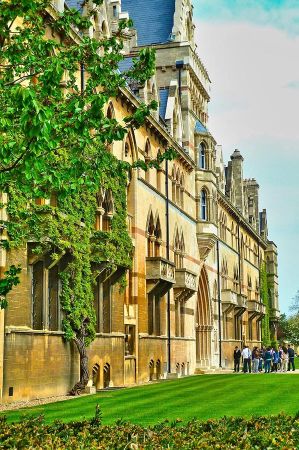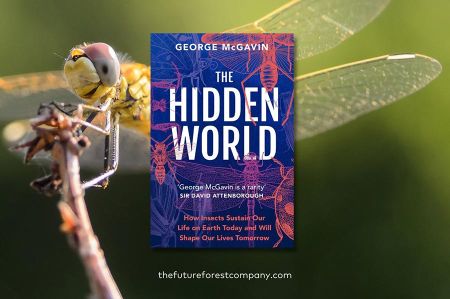George McGavin – former Oxford University entomologist
- Written by Portal Editor
Today's entomological collection at the Natural History Museum at the University of Oxford is huge, as it contains over five million insects.
After a visit with George McGavin, we jokingly joked that it would probably take the life's work of at least three carpenters to make all the drawer cabinets for storing the insects. But one after another.
First chance meeting in the pub near Oxford University


The University Natural History Museum houses the university's zoological, entomological and geological exhibits. It is located in a large neo-Gothic building on Parks Road in the university's science park. Its collection includes the skeletons of a Tyrannosaurus and a Triceratops as well as the most complete remains of a dodo in the world. It also houses the “Simonyi Professorship for the Public Understanding of Science”.
History with incredible consequences – louse on the wine
In 1863, J.O. Westwood, professor of entomology at the University of Oxford, a package of plant samples containing a few vine leaves with gall-like growths. In one of them, the researcher discovered an insect that was small and unknown to him. Westwood noted a few observations and then forgot about it.
At around the same time, a few vines died in a winery in Pujaut near Tavel (Côtes du Rhône). They do not suffer from any of the previously known vine diseases. But nobody pays attention to this fact either. Four years later, the manager of a winery near Arles addressed a letter to the president of the regional agricultural committee. Vines have been dying on his winery for two years without him being able to find the cause.
In July 1868 a second commission was formed. It consists of Jules-Emile Planchon, professor at the Pharmacy School of Montpellier, the agronomist Gaston Bazille and the gardener Félix Sahut. The three experts tear an infected vine out of the ground at a winemaker named de Langloy in Saint-Martin du Crau (near Saint-Remyde Provence). They believe there is a fungal infection and are looking for witnesses with magnifying glasses out. They do not find a fungus, but a small louse of yellowish colour, sticking to the wood and sucking its sap.
A louse? No, there are thousands of lice in different stages of development. They are everywhere, at the deepest roots as well as at the most superficial. After some back and forth, the pest is named Phylloxera vastatrix.
While vain scientists fight over appropriate names and argue about where the louse spends its days and who should go down in history as the discoverer of phylloxera, the phylloxera continued its work of destruction unhindered. A year after her official discovery, she appears in Bordeaux. In 1879, two thirds of the French vineyard area was infested with the pest. This is a small hint of the blatant importance that insects, no matter how small, can have for us and the environment. But now back to George McGavin.
An entomologist who can also mediate
George McGavin was Assistant Curator of the Oxford Museum's entomological collections of over five million insects from 1984 to 2008. They come from different families and from all over the world and some were collected more than 150 years ago, not just since the louse on the wine.
McGavin attended Daniel Stewart's College, a private school in Edinburgh, and then studied zoology at the University of Edinburgh from 1971 to 1975, followed by a doctorate in entomology at Imperial College, London. He then taught and researched at the University of Oxford. He is an Honorary Research Associate at the Oxford University Museum of Natural History and the Department of Zoology, Oxford University, where his interests are listed as “Terrestrial arthropods, particularly in tropical forests, caves and savannahs.” He is also visiting professor of entomology at the University of Derby.
George also lectured at the Cheltenham Science Festival, delivered the Royal Geographical Society's Children's Christmas Lecture and contributed to their school program. He won the Earthwatch debate 'Irreplaceable - The World's Most Invaluable Species', broadcast on BBC Radio 4 in 2008 and he is a lecturer on board Cunard ships. In 2017 he gave the Royal Entomological Society's Verrall Lecture on "Stories from TV: an entomologist's perspective".
He is a patron of the Bees, Wasp and Ants Recording Scheme and Alderney Records Center charity Wildscreen and he is President of the Dorset Wildlife Trust and a global ambassador for Earthwatch.
A comprehensive handbook he wrote covers all 29 orders of insects, as well as spiders and terrestrial arthropods. It is packed with hundreds of annotated photos and illustrations to help readers and users recognize the many species of insects, and provides a brief description of each insect family with key characteristics, including life cycles, the environment in which they thrive, and a photographic guide, which helps categorize the group of insects. It is an essential guide for beginners and enthusiasts alike.
Smithsonian Handbooks are the most visually appealing field guides on the book market. With more than 500 full-colour illustrations and photographs, as well as detailed notes, the Smithsonian Handbooks make identification easy and accurate.
Please read as well:
